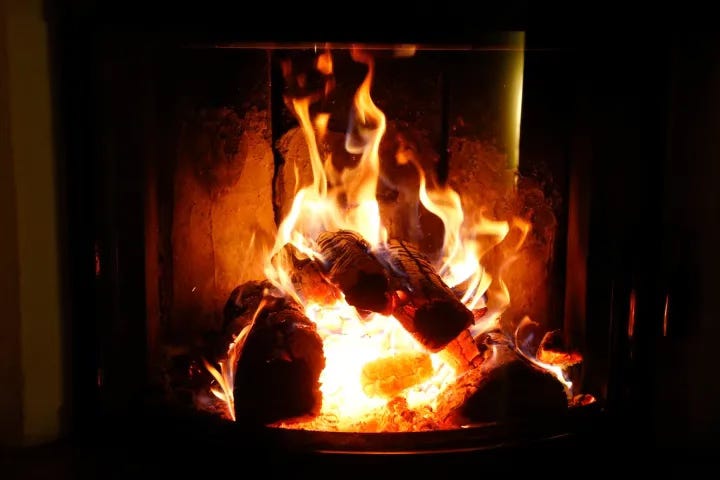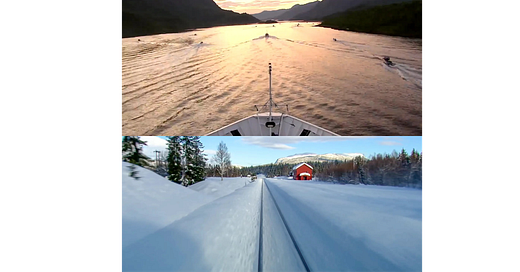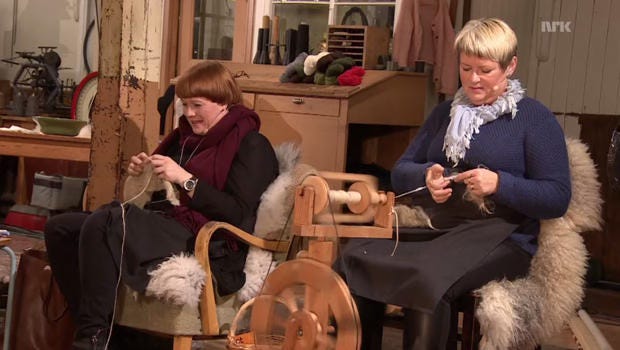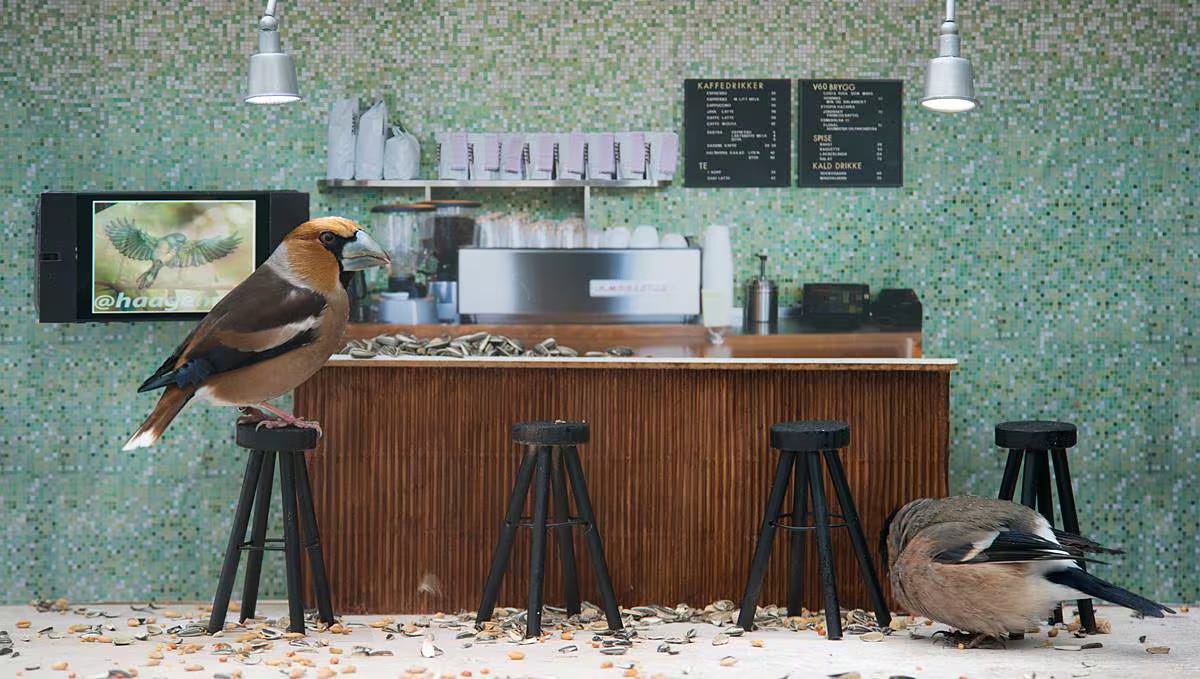Why We Need Norwegian Slow TV Now More Than Ever
A nation bonding over nature, peace and tranquility
Political chaos. War. Trade wars. Confusion. Insecurity. Alternative facts. Lies. Shortening attention span. Chronic scrolling. 24/7 news distributed in social media clips. Unlimited content at our fingertips. 100,000 new songs released every day. 3.2 billion gamers playing for hours daily. Billions spent on new TV shows and movies by streaming platforms. Sounds familiar? Our daily impressions and mental stimuli are off the charts.
Action and horror movies are some of the most popular genres in film and TV, leaving the audience on the edge of their seat. Jump scares, car chases, shootouts – we eat it up as an escape from our normal day to take our minds off our jobs, our family issues, our social life (or lack thereof), and we escape for a few hours. Nobody does this form of entertainment better than Hollywood.
In a world with constant bombardment of breaking news and a total proliferation of content, one would think the Norwegians would do everything they could to keep up.
And then came Norwegian Slow TV…
The first time I heard this phrase that I can remember, was actually very recently, and from an American, actually. It’s in a reel I shared on our Instagram account @Reels.Riffs featuring American actor, screenwriter, and executive producer Mark Duplass, best known as Chip Black from the Apple TV+ hit series ‘The Morning Show’ and writer and executive producer of Netflix’ ‘Penelope.’ Duplass says in the reel that ‘Penelope’ was very much inspired by the ‘Norwegian Slow TV movement.’ He calls these programs “meditative relaxation shows built for slower pace.”
Norwegian Slow TV, or ‘sakte-TV’ as the Vikings call it, is basically a continuous unedited broadcast in real-time. NRK, the Norwegian public broadcasting corporation, pioneered this genre. Slow TV shines the spotlight on every-day experiences, making the ordinary extraordinary.
CBS Sunday Morning’s report from seven years ago goes into detail about what Norwegian Slow TV really is:
2009: Bergen to Oslo Railway Journey (Bergensbanen Minute by Minute)
As the CBS video above illustrates, the idea and concept for Norwegian Slow TV was put into motion by NRK’s Rune Møklebust and Thomas Hellum. After a lunch break discussion at NRK, the idea of a live broadcast of the train ride emerged to mark the 100th anniversary of Bergensbanen, the Bergen-Oslo railway. Hellum is credited as the writer, director, cinematographer, and producer of the very first Norwegian Slow TV program. Cameras were attached to the outside of the train and they conducted (no pun intended) interviews along the way, and showed archived footage during the long tunnels (there are a lot of them).
This very first Slow TV broadcast, which lasted 7 hours and 14 minutes, was a huge success. Over 1 million Norwegians tuned in, representing nearly 20% of the entire population.
Take a look at Thomas Hellum’s TEDx Talk about Norwegian Slow TV from 2014:
2011: Hurtigruten - Minute by Minute
The next Slow TV expedition was on the iconic Hurtigruten, the Norwegian coastal voyage from Bergen to Kirkenes. It showcased Norway’s coastal scenery, local culture, and port stops. Now the Norwegians were completely onboard (!) and would show up in droves at each port along the way. Each port tried to outdo the previous one in terms of crowd size at the pier and the quality of live entertainment being showcased to the entire country. The local mayors of each town were there and were interviewed, and it became a huge cultural event that blew up the social media platforms. This program lasted 134 hours (5 ½ days).

2013: National Knitting Evening (Nasjonal Strikkekveld)
For 12 hours, Norwegians would gather in front of their TV screens to celebrate Norwegian knitting traditions. This Slow TV event featured interviews with knitting enthusiasts, as well as an attempt to break the world record for the fastest sheep-to-sweater production. The program highlighted traditional crafts and sparked renewed interest in knitting. They made knitting cool again.
2013: Salmon Fishing – Minute by Minute (Lakseelva)
Norwegians love fish, and they love to fish. For 18 hours, NRK broadcast live coverage from one of the most famous salmon fishing rivers in Norway: Gaula River. The calmness, the sounds of flowing water, birds and wind through the trees reinforced the appeal of Slow TV as a mindfulness experience.
2014: The Piip-Show
The Piip-Show is a reality show for birds. A miniature café set with birdseeds and tiny furniture for birds to visit and interact, has become a popular whimsical and humorous take on Slow TV that apparently is still ongoing. This webcam show quickly accumulated over 1 million viewers from 164 countries and became the most popular program on NRK.
Why did Slow TV become so popular?
This form of unedited and unscripted live broadcasting celebrated Norwegian nature, culture and heritage through ordinary experiences. It was a family-friendly form of programming, and it encouraged participation from the public. All they had to do, was show up. This type of communal exercise unified people across divides. It was authentic, there were no commercial breaks, and reportedly relaxed and calmed the viewers.
A ripple effect
Norwegian Slow TV inspired other countries such as The United States (Netflix and The Weather Channel), the United Kingdom (‘BBC Four Goes Slow’), Germany embraced their Sneak TV (Schleichen Fernsehen), The Netherlands experimented with their own Slow TV broadcasts, such as ‘Rail Away,’ and Japan chose to integrate slow-paced segments into variety shows and travel documentaries. Even YouTube embraced the phenomenon and embraced niche content such as ‘Relaxing Nature Soundscapes.’

Is Slow TV boring and predictable?
Norwegian Slow TV has proven that a large number of viewers enjoy watching live TV without a script, without a plot, and with a natural pace. However, there is definitely a strong storytelling element, because the story unfolds in front of our eyes without us really knowing what will happen. Along the way, you get to watch spectacular scenery and meet people who are going on that particular journey. The unpredictable element of “watch what happens live” clearly drew viewers to their TV sets.
This year, we are seeing a number of scripted TV shows (including Netflix’ ‘Adolescence’ and Apple TV+’s ‘The Studio’) embrace the one-take approach and shoot continuous long takes without interruption. I’m not saying this was directly inspired by the Norwegian Slow TV movement, but it certainly has parallels.
Going live is trendy, and Slow TV did it first
Today, all the major social media platforms have a way for users to go live. They can stream live continuously for hours if they want to. It gives the viewer a sense of participation and removes that FOMO feeling (Fear Of Missing Out) because you are watching in real-time.
Norwegian Slow TV is all about that. Be a part of the moment, join the movement. Watch what happens, NBC’s slogan used to be “Watch What Happens,’ and that’s exactly what Slow TV allows the viewer. Even though, for a lot of the time, nothing really happens. But that’s the beauty of it all!
Today’s world needs more Slow TV
The world can feel exhausting right now. It can feel unpredictable. When you need a break from it all, sit down, relax, take a deep breath, pick one the videos below, and click. I can almost guarantee you will feel better.
Enjoy videos of Norwegian Slow TV’s greatest hits:
Video: Bergen Railway
Video: Hurtigruten’s Coastal Voyage
Video: Knitting Evening
Video: Salmon Fishing
Video: About The Piip Show










I had never heard about Norwegian slow TV but yet immediately kind of pictured it. I agree we need more of it
Adore this take!